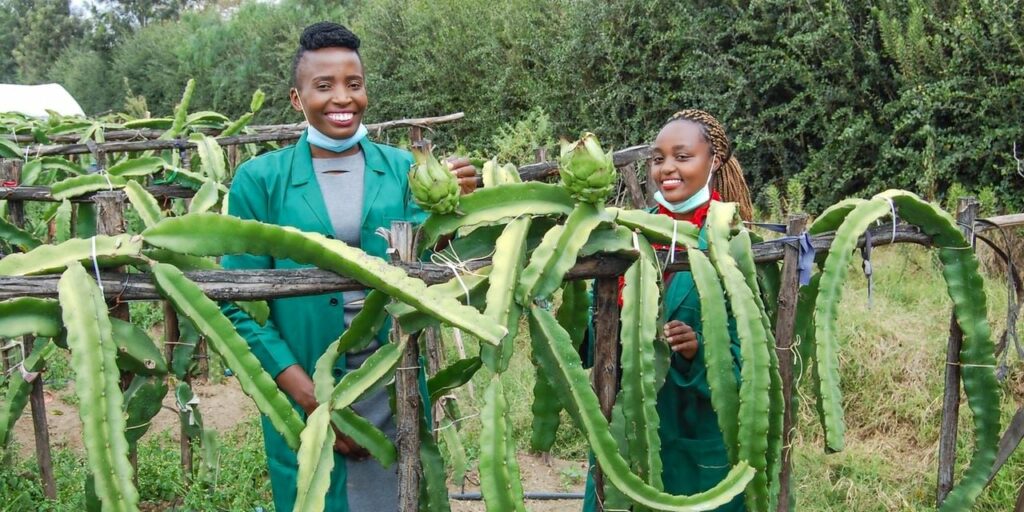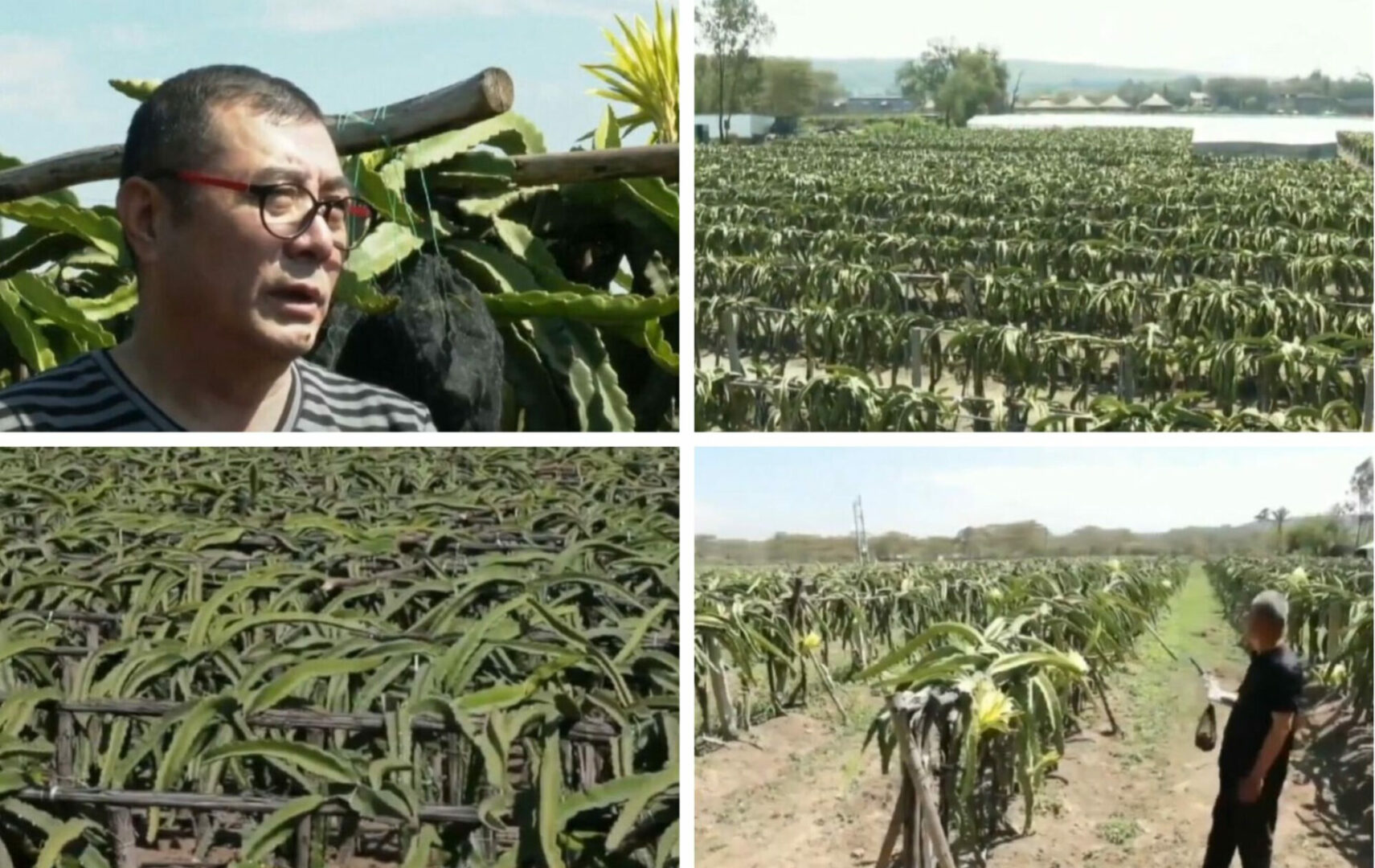Beauty lies in the eyes of the beholder, they say. For a businessman, sights are only set on profits. What if you could combine both?
Once upon a time, the Moi South Lake Road in Naivasha which links Hell’s Gate National Park to several flower farms was a nightmare for motorists.
It was not until 3 Chinese nationals set foot in the area, that even foreigners and locals began to relish moments spent cruising by these roads.
He Qin Wen, Tang Xiao Kun and Zhang Weng Sheng visited the area in February 2019 and were instantly attracted to the good weather conditions on the Lake Naivasha shore.
They also loved the well-drained soils. The trio deliberated on the types of fruits they could grow in the area.
Eventually, they settled on Dragon Fruits (Pitaya), strawberries, kiwi, grapes, gooseberries, muskmelon, sweet melon, pawpaws, tomatoes, guavas, lemons, oranges, mangoes and avocados.
Other factors they had to consider were the availability of water (Lake Naivasha) and also the new entry of dragon fruits into the Kenyan market.
With this manifestation, the group of farmers decided to establish Kaiview Ecological Horticultural Farm. Their vision was to establish a beautiful orchard while keeping profits in mind.
This marked the beginning of their mission; to plant dragon fruits on 260 acres of land in the Rift Valley.
In a YouTube interview with EYEAFRICA TV, the farmers explained further why they settled on Kenyan soil and farming with cutting-edge Chinese technology.
‘We discovered that the Kenyan soil is suitable for farming and we had to look for the best fruit that is suitable for the Kenyan soil,” one of the Chinese men on the farm revealed.
“In Kenya, there are no dragon fruits and we took that risk to see how people will respond. So far, they’re responding well,” he continued.
The dragon fruit, known for its bright red outer skin, enormous size and kiwi-pear-like taste retails at a minimum of Sh. 1000 per kilo on the Kenyan market.
The plants bear fruits 5 times a year and a single cactus can produce as much as 400 dragon fruits annually.
Dragon Fruit: How Kenya’s most expensive fruit is making farmers multi-millionaires
It is worth noting that the plant continues to produce at peak capacity for 20 years, making it a good long-term investment for farmers.
The fact that it is drought resistant also makes it appealing to Kenyan farmers who are always looking for resilient crops.
So far, Kaiview Orchard mainly deals with exports although they have some business clients in Kenya comprising mainly supermarkets and restaurants frequented by Asians living in Kenya.
“So far, the markets are responding well, especially the exports one. We export to Dubai, Italy and Spain. The local market is also responding well with some local supermarkets and people coming in to inquire,” the Chinese farmer stated.
Currently, the farm has employed over 200 locals and has trained them on planting dragon fruits.
Furthermore, in collaboration with the Chinese Embassy of Kenya, they also organize for those training sessions to go to China and learn more.
Alice Wanjiku is one of the managers who work at the farm. She asserts that the dragon fruits are grown using pure organic fertilisers; chicken waste and cow dung.
Walter Muange: Farmer reaping millions per year from Kenya’s ‘most expensive’ fruit

“Before growing any crops, the soil is well-tilled, then mixed with chicken manure and cow dung. We use organic manure because we would like to conserve the ecosystem,” Alice noted.
Did you love the story? You can also share YOUR story and get it published on Bizna Click here to get started.




